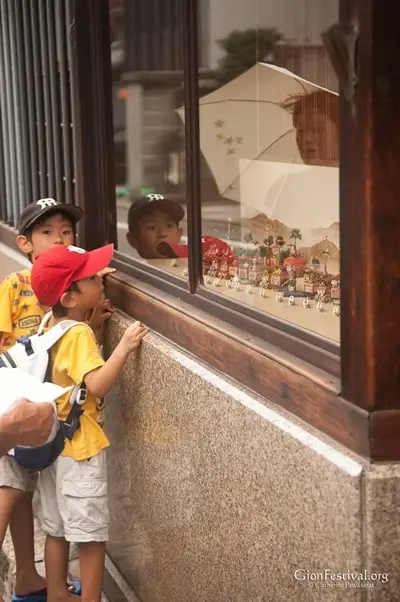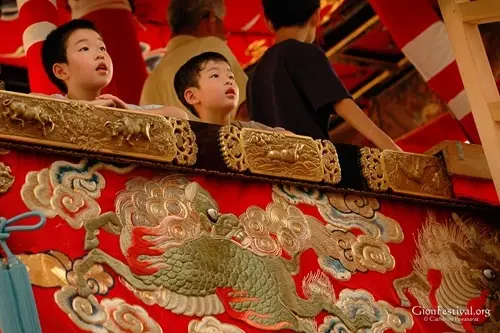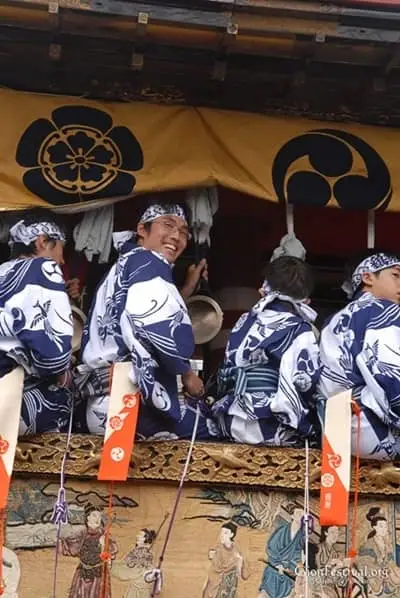Visiting the Gion Festival is a considerable undertaking: there is so much to enjoy and learn from. There are numerous processions, thirty-four floats, antique treasures, fine arts, otherworldly music, an array of spiritual traditions, family heirlooms on display in the byōbu matsuri, kimono, people watching, thousands of dedicated volunteers, and more than 1150 years of history. It’s an extraordinary celebration.
It’s also midsummer in the subtropics. This means it’s hot as blazes, very humid, and prone to pouring rain, even typhoons. Add a very foreign language and a million visitors in an area of less than a mile square. Now you know what you’re in for.
After I created this website, I wrote an entire book for people like you, so you can navigate the Gion Matsuri according to your schedule or interest, with style! You can download a gift chapter to check it out before buying.
Otherwise, throughout your visit, relax, surrender to the heat and crowds, and keep your senses open. The exotic, baroque cacophony of the Gion Festival is an unparalleled sensory experience, appropriately supernatural. You’ll find an absurd juxtaposition of sublime artistic detail with modern kitsch! Some of the mundane surroundings—like downtown auto traffic—can be chaotic, so let those pass over you.

The Gion Festival neighborhoods display their floats in two parts: the larger saki-matsuri (“early festival” from July 10-17) and smaller-scale ato-matsuri (“later festival” from July 18-24). Click on those pages to see which of the larger floats you can actually get on.
Visit as many of the treasure display areas as you can, as chances are good that you won’t see many museum-quality treasures like these so close up anywhere else on the planet.
On each float‘s webpage I try to share enough about each float and its treasures to make your visit rewarding. Learn more about the individual floats by clicking on the drop-down menu of links under the Floats menu at the top of this page.
For the smaller floats, entrance is free. A small purchase helps support the communities’ ability to keep sharing this way with people like us.
Some of the larger floats require a small purchase (JPY1500 or less) to enter their treasure display area. These usually allow you to actually get on the float as well. Is it worth it? Yes, at least once.
Visiting the Gion Festival also includes a delightful subfestival called the byōbu matsuri, or “folding screen festival.” Neighborhood families and companies display historic works of art and other heirlooms. By voluntarily displaying these during the festival, more people share the festival spirit, generously giving us a taste of the culture that kimono merchants traditionally enjoyed.

These will help you to make your festival experience more enjoyable:
